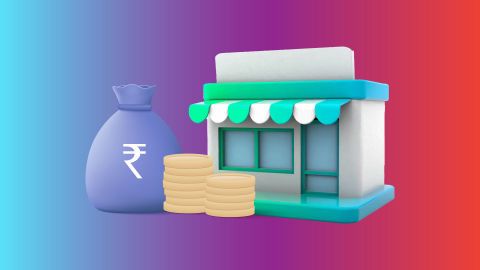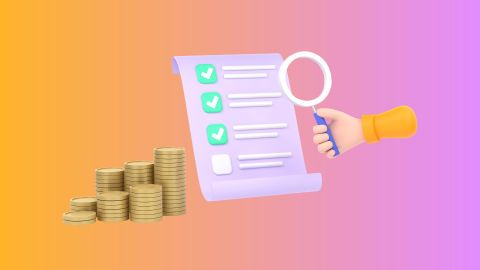Types of Procurement
There are several different types of procurement that businesses can engage in, depending on their specific needs and objectives:
- Direct Procurement: Involves the purchase of goods and services directly related to the production of goods sold by the company.
- Indirect Procurement: Includes the acquisition of goods and services that are not directly included in a product for sale, such as office supplies and consulting services.
- Goods Procurement: The process of purchasing physical items that are required for the company’s operations.
- Services Procurement: Involves obtaining intangible services that aid in the business’s operations. Understanding these types helps businesses align their capital structure and financing needs with their procurement strategies.
How Procurement Works
In business, the procurement process—or the way a company buys goods and services—is very important. A company’s success often depends on how well it can get the right materials or services in the right amount, at the right price. If the costs are too high, the business may not make a profit. Government offices also need to manage procurement carefully so they don’t spend more than their budget allows. Usually, there is a set amount of money given to managers for buying what they need.
In simple terms, procurement includes everything from planning what to buy, asking for it, receiving the items or services, and then making the payment. More specifically, it can also involve setting quality standards, predicting what the company will need, finding the right suppliers, arranging money for the purchase, agreeing on prices and contracts, completing the deal, and keeping track of stock. Because of all this, different departments in a company often need to work together to make procurement successful.
Depending on their skills, different teams may handle tasks such as:
Deciding what goods or services are needed, based on the company’s goals
Asking for price quotes from trustworthy suppliers
Discussing and agreeing on prices and contract terms
Receiving the goods and making the payment
Sustainable procurement management
Sustainable procurement, which incorporates Environmental, Social, and Governance (ESG) criteria into purchasing practices and decisions, is not merely a passing trend in procurement; it has become a vital consideration.
The challenges of sustainable procurement include the complexity and transparency of supply chains, performance measurement, compliance with standards, and capacity building. Sourcing low-emission materials like green steel, recycled aluminium, and plastic is already difficult, and it is expected to become even more challenging. Additionally, consumers are increasingly inclined to support brands that can demonstrate genuine sustainability, making sustainable procurement essential for business success. In such scenarios, financial support options like an MSME loan can be instrumental in helping small and medium enterprises invest in sustainable sourcing and infrastructure upgrades.
Consider one key aspect of sustainable procurement—reducing supply chain emissions. This process can take years, so initiating the transition now will help businesses remain competitive and resilient in the future.
Some examples of sustainable procurement include:
- Green sourcing: This involves selecting products and services with a lower environmental impact, such as eliminating single-use plastics, using recycled materials, and adopting clean technologies. Green procurement can lower costs, support corporate social responsibility goals, and appeal to eco-conscious consumers.
- Ethically-sourced materials: Ethical sourcing ensures products come from companies that pay fair wages, provide good working conditions, avoid child labour, and contribute positively to their communities.
- Reduced carbon footprint: Lowering carbon emissions and energy use extends beyond daily operations to include reducing emissions across the entire supply chain.
Procurement vs. Purchasing
Aspect
|
Procurement
|
Purchasing
|
Scope
|
Broader, includes sourcing, negotiating and strategic selection
|
Narrower, mainly involves buying
|
Objective
|
To ensure the best possible value from suppliers
|
To acquire goods and services
|
Process
|
Strategic, with long-term benefits
|
Transactional, with immediate effect
|
Accounting for Procurement
- Financial Oversight: Regular monitoring of expenditures and cost-saving analysis.
- Budget Compliance: Ensuring that purchases stay within company budget parameters.
- Asset Management: Tracking the lifespan and depreciation of purchased assets for accurate financial assessment.
Procurement with AI Automation
Automation has made many jobs quicker and simpler—and procurement is no different. Today, procurement professionals are using Artificial Intelligence (AI) to handle everyday tasks, make better decisions using data, and manage suppliers more effectively. With the speed and accuracy of AI tools, procurement processes become smoother and more efficient.
Here are some ways AI helps in procurement:
1. Comparing product costs:
AI can quickly check prices and total costs of products from different suppliers. This helps you find the best price per item, especially for things you buy often.
2. Finding alternatives during stockouts:
If an item is out of stock or available in low quantity, AI helps you find the same or similar products easily. It also shows the full cost of the replacement, including delivery charges and other fees.
3. Managing supplier performance:
AI tools bring all supplier information into one place, making it easier to manage the supplier relationship. With real-time data and smart analysis, you can improve efficiency and get better results from your suppliers.
4. Handling invoices and payments:
AI speeds up invoice checking and processing by doing it automatically. This reduces mistakes, saves time, and ensures faster payments to vendors.
5. Analysing spend and planning budgets:
AI-powered spend analysis tools help track how money is being spent. They also highlight areas where you can save and help you make more accurate budgets.
Steps in the procurement process
- Need Identification: Determine what goods or services are necessary.
- Supplier Evaluation and Selection: Choose the best vendors based on price, quality, and reliability.
- Negotiation and Purchase: Secure the most favorable terms before making a purchase.
Stages of Procurement
The procurement process can be divided into three distinct stages: sourcing, purchasing, and payment.
- Sourcing stage: In the sourcing stage, organizations begin by identifying their requirements and initiating purchase requests. This phase involves assessing potential suppliers, evaluating their capabilities, and building robust relationships that can foster collaboration and continuous improvement. It sets the groundwork for efficient procurement by establishing clear expectations and standards. For businesses scaling operations or negotiating large supplier contracts, securing adequate funding through a secured business loan can support long-term procurement goals. Check your pre-approved business loan offer to explore funding options for large-scale procurement contracts or supplier negotiations.
- Purchasing stage: Moving into the purchasing stage, negotiations ensue to finalize terms and conditions with chosen suppliers. Purchase orders are then created, specifying the goods or services required, and deliveries are inspected upon receipt to ensure they meet quality standards and match the order details.
- Payment stage: In the payment stage, accounts payable meticulously conducts three-way matching between the purchase order, invoice, and receipt to verify accuracy. Once invoices are approved, payments are processed promptly, and meticulous records of all transactions are maintained for audit purposes and financial transparency.
Each stage is integral to the seamless operation of procurement, ensuring timely acquisition of goods and services while upholding quality and fiscal responsibility.
Three components of Procurement
Procurement involves three critical components: people, process, and paperwork.
- People: Individuals, including procurement specialists, accounts payable, and business units requesting goods/services, drive each procurement step. Stakeholder involvement varies based on purchase value, with more input often needed for high-value acquisitions.
- Process: A streamlined process is crucial for cost control and timely supply delivery. Clear procedures enhance accuracy and efficiency, ensuring tasks are completed on schedule. Disorganised processes lead to errors like overpayments or delayed payments, impacting financial health and supplier relations.
- Paperwork: Comprehensive documentation at every procurement stage is essential. Records maintain crucial data on payment terms and supplier performance. They support audit trails and dispute resolution, preserving continuity amid staffing changes.
7 Common principles of Procurement
In both public-sector and private-sector organisations, procurement is a critical process for acquiring goods and services. However, in the public sector, there are specific principles that guide how procurement should be conducted. These principles ensure transparency, fairness, and accountability due to the use of public funds.
Here are seven common principles of procurement:
- Fairness: All suppliers and individuals should be treated equally in the procurement process. Decisions should be based on objective criteria that align with the organization's needs. For smaller vendors or startups participating in public procurement, access to a micro loan can help them meet initial supply or compliance costs.
- Integrity: Those involved in procurement must uphold high standards of integrity. This includes being honest, responsible, and reliable in all dealings. Funds should be used for their intended purpose and in the public's best interest.
- Effectiveness: Procurement processes should be efficient to minimise delays and administrative costs. Streamlining these processes helps maximise the benefits of procurement activities.
- Value for money: Organisations must spend public funds efficiently. This involves analysing costs and benefits, considering factors like quality and durability. The goal is to achieve the best overall value, not just the lowest cost.
- Transparency: Information related to procurement decisions should be accessible to the public and suppliers. This transparency fosters trust and allows stakeholders to understand how public funds are being used.
- Accountability: Individuals responsible for procurement decisions are accountable for their actions. They should accurately report procurement activities and be open to scrutiny. This ensures that decisions are made responsibly and in accordance with established guidelines.
- Competition: Whenever possible, organisations should encourage competition among suppliers. This helps ensure competitive pricing and quality. Exceptions may apply, such as when only one supplier can provide a unique product.
These principles serve as ethical guidelines to ensure that public procurement processes are conducted fairly, transparently, and efficiently, ultimately serving the best interests of the public.
Why is procurement important in business?
Procurement is vital in business because it directly affects a company's bottom line. Good procurement practices reduce purchase costs, ensure high quality, and allow timely delivery of goods and services, which can significantly improve operational efficiency and increase profit margins.
Maximize Procurement Potential: Unlock Growth with Business Loans
Enhance your procurement strategies with the flexibility of a business loan. Such financial backing allows you to invest in advanced procurement technologies and bulk purchasing, which can reduce costs and improve supply chain efficiency, ultimately fostering business growth. Before applying, it's essential to evaluate the applicable business loan interest rate to ensure affordability and alignment with your financial planning.
Conclusion
Effective procurement is essential for any business looking to maintain competitive advantage and operational efficiency. By understanding the different aspects of procurement and utilizing tools like business loans to enhance procurement processes, companies can achieve substantial growth and long-term success in today’s dynamic market environment.






